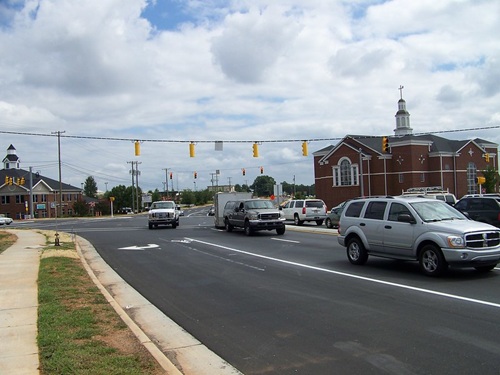The National Highway Traffic Safety Administration projected a 4.9 percent decline in motor vehicle crash fatalities for the second quarter of 2022 compared to the same quarter in 2021. However, the agency noted that its early estimates indicated traffic fatalities for the first six months of 2022 increased 0.5 percent compared to the same period in 2021.
[Above photo by the Kansas DOT]
NHTSA noted that decline in traffic fatalities during the second quarter of 2022 is the first quarterly decline after seven consecutive quarters of year-to-year increases in fatalities that began in the third quarter of 2020.
The agency added that preliminary data reported by the Federal Highway Administration indicates vehicle miles traveled or VMT during the first half of 2022 increased by about 43.2 billion miles, or about 2.8 percent. That means the fatality rate for the first half of 2022 decreased to 1.27 fatalities per 100 million VMT, down from the projected rate of 1.30 fatalities per 100 million VMT in the first half of 2021.

“Although it is heartening to see a projected decline in roadway deaths in recent months, the number of people dying on roads in this country remains a crisis,” stressed Ann Carlson, NHTSA’s acting administrator, in a statement.
The agency also noted that, during the COVID-19 pandemic, a marked increase in fatalities and in the fatality rate began in 2020 and did not let up until the second quarter of 2022.
Research indicated that speeding became a key factor driving that two-year spike in fatalities.
According to a study issued by the Insurance Institute for Highway Safety in July, speeding by motorists increased during the morning and afternoon commuting hours in the early months of the COVID-19 pandemic and never slowed down.

Those findings dovetailed with a report issued by national transportation research nonprofit TRIP in late June, which noted that traffic fatalities in the U.S. surged by 19 percent from 2019 to 2021, even as vehicle travel rates plummeted due to the COVID-19 pandemic.
TRIP’s report – entitled “Addressing America’s Traffic Safety Crisis: Examining the Causes of Increasing U.S. Traffic Fatalities and Identifying Solutions to Improve Road User Safety” – said that spike in traffic fatalities is largely related to higher rates of “risky driving” behaviors, such as speeding and impairment due to alcohol and/or drug use.
State departments of transportation all over the country recognized the negative safety implications of the speeding spiked early on in the COVID-19 pandemic and have sought ways to reverse it over the last two years.

A recent example is the “It’s Not a Game” a multimedia safety campaign launched in June by the Illinois Department of Transportation.
That campaign seeks to reduce injuries and fatalities associated with motorcycles, bicycles, pedestrians, work zones, as well as boost seatbelt usage and reduce impaired and distracted driving.
Meanwhile, Maryland’s Motor Vehicle Administration – a division of the Maryland Department of Transportation – participated in a pilot test of a combination of enforcement, engineering, and public outreach efforts to reduce speeding.
That project – spearheaded by IIHS – reduced average speeds by 9 percent, alongside a 78 percent reduction in the odds that a vehicle exceeded the speed limit by any amount and an 80 percent reduction in the odds of a driver going more than 10 mph over the limit.
 Top Stories
Top Stories


